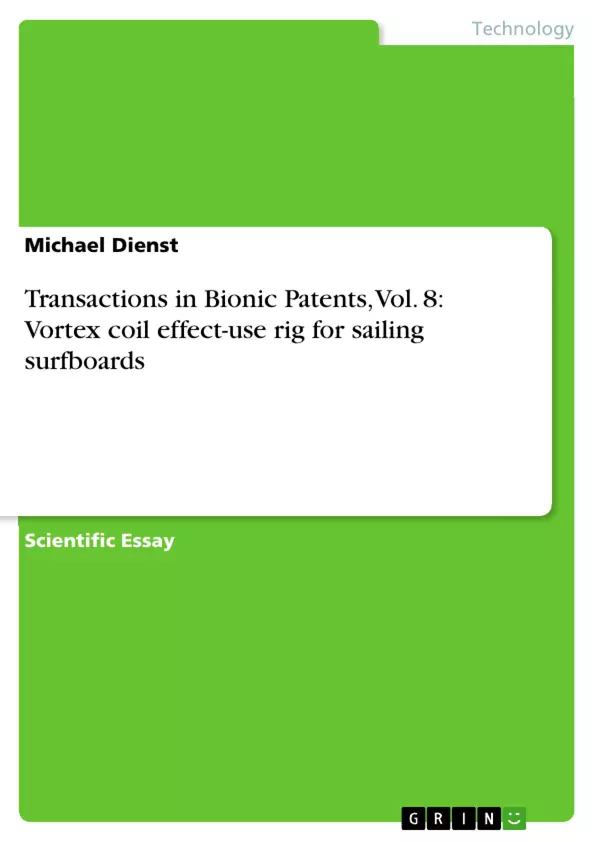The invention relates to a rig for sailing and windsurfing, consisting of a textile wing membrane and a guide and mounting structure. The rig uses the so-called vortex coil effect (also known as eddy reel effect). The basic principle of the leaflet geometry is the so-called "crab claws rig" modeled.
Table of Contents
- Vortex coil effect-use rig for sailing surfboards
- Description
- State of the art, Historical overview and novelty
- State of science
- State of science, vortex coil phenomenology
- State of science, biology and technology
- Problem description
- Solution proposal
- Patent claims
Objectives and Key Themes
This patent application focuses on a new type of rig for sailing surfboards that utilizes the vortex coil effect. The document aims to outline the design principles and explain the scientific basis for this novel approach to wind-powered propulsion.
- The vortex coil effect as a principle for enhanced sailing efficiency
- The historical development and current state of knowledge on the "crab claws-rig"
- The application of biological principles in engineering design, specifically the example of slow-sailing birds and their wingtips
- The adaptation of the crab claws-rig design to the specific demands of sailing surfboards
- The potential for increased efficiency and performance through the use of the vortex coil effect
Chapter Summaries
- The document begins with a detailed description of the innovative rig for sailing surfboards, highlighting its key features: a textile wing membrane and a guide and mounting structure. The rig is designed to leverage the vortex coil effect, a phenomenon that occurs when multiple vortices interact to create a powerful, concentrated flow.
- The next section provides a comprehensive review of the historical development and current understanding of the "crab claws-rig," a traditional sailing technique inspired by the design of outrigger canoes. It acknowledges the advancements made in theoretical understanding and experimental testing of this rig, particularly its potential for improved performance.
- A subsequent section dives into the scientific underpinnings of the vortex coil effect. It discusses the phenomenon of induced edge vortexes and their role in lift generation. The document then explores the evolution of knowledge regarding vortex coil formation, referencing research and patents from the last century.
- The document further explores the connection between biology and technology, highlighting the natural application of the vortex coil effect in the design of slow-sailing birds. The text explains how these birds utilize the vortex coil effect to generate efficient lift and reduce drag, providing a strong basis for the application of this principle in engineering.
- The document concludes by outlining the key challenges associated with adapting the crab claws-rig for use on surfboards. It then presents a detailed proposal for a solution that addresses these challenges and effectively implements the vortex coil effect for optimized wind-powered propulsion.
Keywords
This patent application centers on the concept of using the vortex coil effect in a new type of rig for sailing surfboards, drawing inspiration from both historical sailing techniques and biological adaptations. Key terms include vortex coil effect, crab claws-rig, sailing efficiency, wing membrane, and biomimicry.
- Quote paper
- Dipl.-Ing. Michael Dienst (Author), 2014, Transactions in Bionic Patents, Vol. 8: Vortex coil effect-use rig for sailing surfboards, Munich, GRIN Verlag, https://www.grin.com/document/277438



